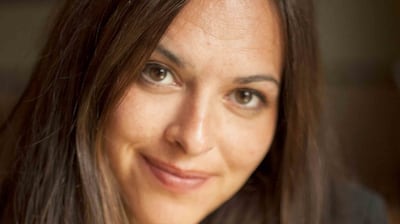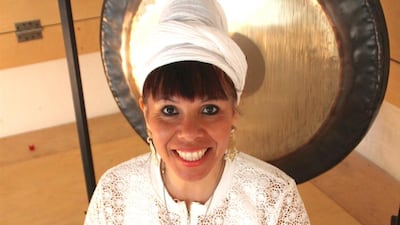"I'm not interested in going to any imitator festivals at all," says Debs Armstrong, the art decor director of Ireland's newest festival All Together Now, an event that she says is raising the game. "Undeniably. It's taking the whole thing up another bar."
Taking place in the 3,000 acres of Co Waterford's Curraghmore House this August bank holiday weekend, the creative and mostly female forces behind this festival are promising something entirely different for the 10,000 people who will make it their home for the three days, with Lord and Lady Waterford watching on.
The brainchild of Pod's John Reynolds, who founded Electric Picnic in 2004 and then parted ways with the festival five years ago, All Together Now should top the list for any festival magpies who feel like other festivals have lost their shine.

Through art installations and the freedom to explore the estate’s extensive gardens, the stories of Curraghmore House will come to life. As the founder of Shangri-La, Glastonbury’s dystopian town, and the producer of the anarchic after-hours party Lost Vagueness that made its way from Glasto to Electric Picnic, Armstrong knows how to titillate the senses of a festival audience.
Listing off her favourite Curraghmore stories, she starts with Crotty the Robber – an 18th-century Robin Hood character who robbed from the rich and gave to the poor, sometimes burying his loot in the nearby Comeragh mountains.
“A few years ago a bus of schoolchildren from Dublin went on a walk and they actually did find some real, buried Crotty treasure,” she says excitedly. “Oh, Crotty was hung, drawn and quartered and all of that good stuff but they found real buried treasure there and we are going to bury a little gold bar ourselves and do a Crotty Treasure Hunt.”
The geometric design of the festival’s healing and wellness area, known as the Lawns of Tranquility, is a nod to the estate’s magical healing crystal ball, which has been in the family for 800 years and was last used in the 1960s to treat the Curraghmore cattle for foot-and-mouth disease.
Armstrong co-ordinated the Lawns of Tranquility with Kundalini yoga expert Kary Stewart, a friend and self-confessed festival head who she picked up from her Glastonbury days.
The Lawns of Tranquility is divided into zones, with the main dome hosting group activities like morning yoga and meditation, and in the surrounding domes, you can book in therapy sessions, including reiki, breathwork, Ayurvedic massage and shamanic reflexology, which will be altered for your needs, depending on your “state of roughness”, chirps Stewart.
“We’ve got a practitioner in who does reflexology for festivals,” she says. “At festivals you can get quite depleted, we often work our bodies really hard, whether it’s by drinking or dancing a lot, and we can channel your therapy appropriately to that.”
But the thing that Stewart is most excited about is the nighttime Gong Puja. She says it’s difficult to explain without doing a weekend course, but the synopsis is that a Gong Puja ceremony will “bathe” you in sound, sending sound currents through your body and calming your nervous system.

With Irish gong players due to assist, she hopes to get a load of gongs going at once. “We’re trying to see if it will work for the whole night, so an all-night Gong Puja. Although that might be a bit of a tall order, but it will be at least four hours,” she says. “You just lie down and get gonged up.”
First meeting
The story of All Together Now regularly returns to Electric Picnic, with Armstrong first meeting Reynolds there when she brought Lost Vagueness to Stradbally in 2005 . One of All Together Now's other organisers played an even bigger role in initially setting the Picnic aside from other festivals – Theatre of Food creator Vanessa Clarke is in charge of all of the food production at the Curraghmore House event.
“I like good food and I believe – and so does John – that good food leads to good times. The punter will have a much nicer time if the food that they’re eating is good. So when we did the very first Electric Picnic, that’s where I met John,” she says.
“He was looking around to find somebody who was crazy enough to take on doing the food for a music festival but without any burger vans and I said, ‘That’s me! I’d love to do it’. So that’s how we started.”
In banning processed food, frozen chips and processed burgers from the food stalls, she says that they caused "absolutely consternation" at the first Picnic. "All the traditional chipper guys were like, 'What do you mean you're having a festival and we're not invited?' And it got quite intense and we had to call a lot of rabbits out of a lot of hats to pull it off because in those days, there was no food trucks in Ireland and there was no cute, converted vans doing lovely things. They didn't exist."
Noting that the food industry has changed so much in Ireland since 2004, she says that festivals now have to cater to everyone in terms of food.
“People want really nice food, whether they’re at a festival or they’re at home, and it’s great,” she says. “Now, don’t get me wrong, there’s gonna be people who go down to the festival and have just as much fun as everybody else and eat a bag of chips a day.”
All weekend long, there will be kambucha, vegan stalls, gluten-free foods, lobster, poutine, crepes, ice pops made from 100 per cent cold-pressed vegetable and fruit juice, Eddie Rockets, Wok n' Roll, and a Waterford food restaurant, which will be presented by local chefs Shane McGrath and Paula Hannigan, while on Sunday morning there will be Paul Flynn's Gospel Brunch on the lawns, complete with the London African Gospel Choir and Bloody Marys.
In addition to feeding the masses, Clarke played a huge role in making All Together Now the first Irish festival to introduce 100 per cent compostable packaging at all of the food stalls, while enforcing a full ban on plastic bottles.
To help people get on board with this eco-friendly system, 100 per cent recyclable cardboard cartons for water will be available to buy down there – with 20 per cent of sale prices going to Depaul – and there will be “endless” drinking water taps and recycling bins across the site.
“When we saw the site for All Together Now, it is the most beautiful festival site I’ve ever seen,” she says.
Don't mess with the women on the All Together Now site, I reckon
“We’re really lucky to be able to go and all hang out there for the weekend. But it really struck me, I thought: ‘Well, I don’t want us to all leave and then find that the squirrels and the birds are picking up cigarette butts.’ So we are really, really trying to make an effort this year so that the people who come down understand that we’re just borrowing this land. It belongs to the wildlife down there and we’ve got to make sure that we leave it the way that we found it.”
Overlooking the redwood trees, lakes, rivers and Japanese gardens of Curraghmore House is Mother Brown Stone, an ancient stone that symbolises femininity and fertility and which seems to be assisting with the strong female energy that's working its way through All Together Now.
Driving force
With Diane Vesey heading the security team, Emmalee Luther building a 16ft deer in her role as the festival's second art director, Mel Wilds running the Kids Together area, Sarah McBriar bringing a taste of Belfast's AVA Festival to the Road to Nowhere stage, Linda Devlin running the spoken word area and Jenny Headen and Stef Edwards running the PR, all alongside Armstrong, Stewart and Clarke, women are the driving force of All Together Now. Not to mention the majesty that will consume the grounds when Chaka Khan performs I'm Every Woman on the ATN Stage on Friday night.
“We’re just doing our job,” says Clarke, “but I do think – if I’m allowed to say – because I’m in charge of food and all that, I feel a little bit like I’m a hostess of the party. I want people to have a good time, I want them to eat well, I want them to be comfortable, do you know what I mean? I don’t know if that’s sexist of me to even say that . . . that a man wouldn’t feel that – maybe a man would feel that – but I know I definitely feel it.”
“It’s like an extended family of production people,” adds Stewart, given that most of the team already know each other from different festivals over the years.
“It’s such hard work. Doing anything at a festival is really, really hard work. It can take a long time and it doesn’t make you rich, let’s put it that way. But we love it. We totally love it. What’s better than dancing in the sun? Even in the rain.”
“It’s a delight to work with so many strong, powerful, amazing women,” says Armstrong, pulling us back to the intrigue of Curraghmore House itself by mentioning a curse that supposedly affects the lords of Waterford.
“At some point, one of the lords hung a local child and the grandmother put the widow curse on him and she put it on for seven generations. The firstborn lord would die tragically, and they did. They got chomped by lions, they shot themselves in the face, there was a lot of really dramatic ways for them to die.
“So don’t mess with the women on that site, I reckon.”











